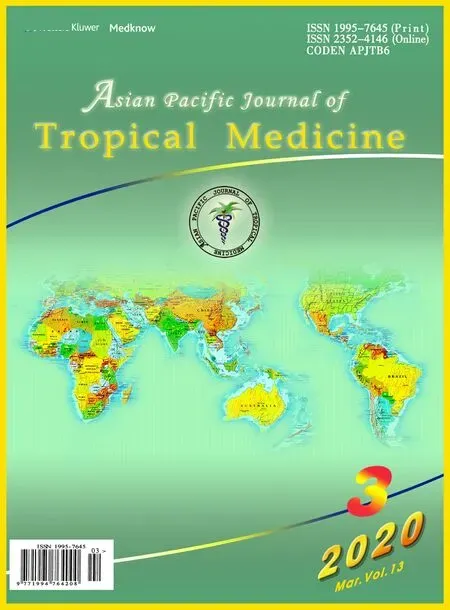Dose prediction of lopinavir/ritonavir for 2019-novel coronavirus (2019-nCoV)infection based on mathematic modeling
Sora Yasri, Viroj Wiwanitkit
1KMT Primary Care Center, Bangkok Thailand
2HDepartment of Community Medicine, Dr DY Patil University, Pune, India
3Hainan Medical University, Haikou, China
4Chulalongkorn University, Bangkok, Thailand
Wuhan novel coronavirus or 2019-novel coronavirus (2019-nCoV)infection is a rapidly emerging respiratory viral disease[1]. 2019-nCoV infection is characterized as febrile illness with possible severe lung complication[1]. The disease was firstly reported in China in December 2019 and then spread to many countries (such as Thailand, Japan and Singapore)[2,3]. As a new disease, there is a limited knowledge of treatment for the infection. Lu recently proposed that some drug might be useful in treatment of 2019-nCoV infection[3]. Lu noted that “l(fā)opinavir/ritonavir, nucleoside analogues,neuraminidase inhibitors, remdesivir, peptide (EK1), abidol, RNA synthesis inhibitors (such as TDF, 3TC), anti-inflammatory drugs(such as hormones and other molecules), Chinese traditional medicine,such ShuFengJieDu capsules and LianHuaQingWen capsule might be useful[3].” Of those mentioned drugs, lopinavir/ritonavir is a widely used antiviral for management of another important virus infection,human immunodeficiency virus (HIV) infection. Since 2019-nCoV infection is an RNA virus similar to HIV, lopinavir/ritonavir is proposed for management of 2019-nCoVinfection.
At present, lopinavir/ritonavir is widely used for possible treatment of 2019-nCoV infection in countries that the emerging infection exists. Here, the authors used a mathematical modelling theoretical approach to predict the expectedproper dosage of lopinavir/ritonavir for possible treatment of 2019-nCoV infection. The protocol for mathematical modeling in this work is the same as previous report by Wiwanitkit et al[4]. Briefly, the primary agreement was there had to be a specific amount of required energy for reaction between lopinavir/ritonavir and its target enzyme and this energy is a specific constant for the reaction. Based on bonding theory, the required amount of lopinavir/ritonavir was varied to the two substrates,lopinavir/ritonavir and target, protease. Here, the simple equation ‘A+ B → C where A was the target enzyme, B was lopinavir/ritonavir and C was end product’ could be written.
For HIV, the molecular mass of protease is equal to 21.6 kDa.For 2019-nCoV, the molecular weight was calculated from the functional motif showing protease function within the sequence of the virus. From molecular weight calculation tool (https://www.bioinformatics.org/sms/prot_mw.html; version 1 by Stothard[4]), the molecular mass of protease of 2019-nCoV is equal to 33.8 kDa. By standard comparison technique as used in the previous report[5], the required dosage of lopinavir /ritonavir for 2019-nCoV infection was about 1.56 times higher than that for HIV infection. Hence, based on the modeling study, if lopinavir/ritonaviris used for management of 2019-nCoV, a doubled dosage of the present dosage for HIV infection is recommended.
Conflict of interest statement
We declare that we have no conflict of interest.
Authors’ contributions
SY and VW conceived the idea, performed the data collection.SY wrote the manuscript and all authors discussed the results and contributed to the final manuscript.
 Asian Pacific Journal of Tropical Medicine2020年3期
Asian Pacific Journal of Tropical Medicine2020年3期
- Asian Pacific Journal of Tropical Medicine的其它文章
- Novel coronavirus (2019-nCoV) update: What we know and what is unknown
- Emerging and re-emerging human infectious diseases: A systematic review of the role of wild animals with a focus on public health impact
- Mapping the high burden areas of cholera in Nepal for potential use of oral cholera vaccine: An analysis of data from publications and routine surveillance systems
- Etiologies of tropical acute febrile illness in West Pahang, Malaysia: A prospective observational study
- Blastocystis incidence, spontaneous clearance, persistence and risk factors in a rural community in Thailand: A prospective cohort study
- Molecular isolation and identification of Mycobacterium avium subsp. hominissuis in Didelphis virginiana from Hidalgo, Mexico
